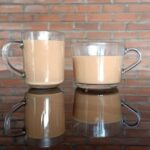Introduction:
Figma is a powerful design tool that offers a wide range of features to create and edit various shapes. One essential skill for designers is knowing how to crop shapes effectively. Cropping shapes allows you to create custom visuals, add depth to designs, and create unique compositions. In this article, we will provide a comprehensive guide on how to crop shapes in Figma. We will explore the pros and cons of shape cropping, address frequently asked questions, and offer tips to help you master this technique and enhance your design workflow.

Pros of Shape Cropping in Figma:
Customization and Creativity:
Shape cropping in Figma gives designers the freedom to create custom visuals and unique compositions. By cropping shapes, you can achieve interesting and eye-catching designs that set your work apart.
Depth and Visual Hierarchy:
Cropping shapes allows you to create depth and establish visual hierarchy within your designs. By overlaying or masking shapes, you can guide the viewer’s attention to specific elements or create visual emphasis.
Flexibility and Iteration:
Cropping shapes in Figma is a non-destructive editing technique, which means you can easily modify or refine your crops without permanently altering the original shapes. This flexibility allows for experimentation and efficient iteration during the design process.
Efficiency and Productivity:
Once you understand the cropping techniques in Figma, you can efficiently apply them to multiple design elements. This saves time and enhances productivity, especially when working on complex design projects with numerous shapes.
Cons of Shape Cropping in Figma:
Complexity for Beginners:
Shape cropping in Figma may initially be challenging for beginners or those new to the software. It requires a basic understanding of Figma’s tools and functions, as well as familiarity with layer organization and masking techniques.
Learning Curve:
While Figma provides a user-friendly interface, mastering shape cropping techniques and understanding the different methods available may require some practice and experimentation. It’s important to invest time in learning and exploring the various possibilities to fully leverage the cropping feature.
Potential for Design Overload:
It’s crucial to exercise caution when cropping shapes to avoid overcrowding designs. Overuse or excessive cropping can result in cluttered visuals and detract from the overall composition. Maintaining a balanced approach is essential to avoid overwhelming the viewer.
Compatibility Limitations:
Although Figma is a versatile design tool, it’s important to note that shape cropping features may not be fully compatible with all design file formats or platforms. It’s recommended to check compatibility and export options before finalizing and sharing your designs.
Frequently Asked Questions (FAQs):
How do I crop a shape in Figma?
To crop a shape in Figma, follow these steps:
- Select the shape you want to crop.
- On the right-side panel, under the “Design” tab, locate the “Mask” section.
- Click on the “Mask” icon and choose a shape to use as a mask (e.g., rectangle, ellipse).
- Adjust the size and position of the mask shape to cover the area you want to keep visible within the original shape.
- Ensure the mask shape is positioned above the shape you want to crop in the layer hierarchy.
- The shape will now be cropped according to the mask shape.
Can I crop multiple shapes at once in Figma?
Yes, you can crop multiple shapes at once in Figma by grouping the shapes you want to crop together. Apply the masking technique as described above to the grouped shapes, and the mask shape will crop all the grouped elements simultaneously.
Can I edit or modify the crop shape after it’s applied?
Yes, the crop shape in Figma is non-destructive, meaning you can easily edit or modify it at any time. Select the mask shape and adjust its size, position, or even change its shape to modify the crop effect on the original shape.
How can I achieve more complex cropping effects in Figma?
Figma offers additional advanced techniques for shape cropping, such as combining multiple mask shapes, applying opacity masks, or utilizing vector networks. These techniques allow for more intricate and custom cropping effects. It’s recommended to explore Figma’s documentation and tutorials to learn about these advanced cropping methods.

Conclusion:
Mastering shape cropping in Figma opens up a world of creative possibilities for designers. By leveraging this feature, you can customize visuals, create depth, and establish visual hierarchy within your designs. While there may be a learning curve, the pros of shape cropping, including customization, depth, flexibility, and efficiency, outweigh the cons. By investing time in learning the techniques and experimenting with different cropping approaches, you can enhance your design workflow and create captivating visuals in Figma. So, dive in, practice, and unlock the potential of shape cropping to take your designs to the next level.



GIPHY App Key not set. Please check settings